The hidden gem cookbooks from 2022 that you might have missed
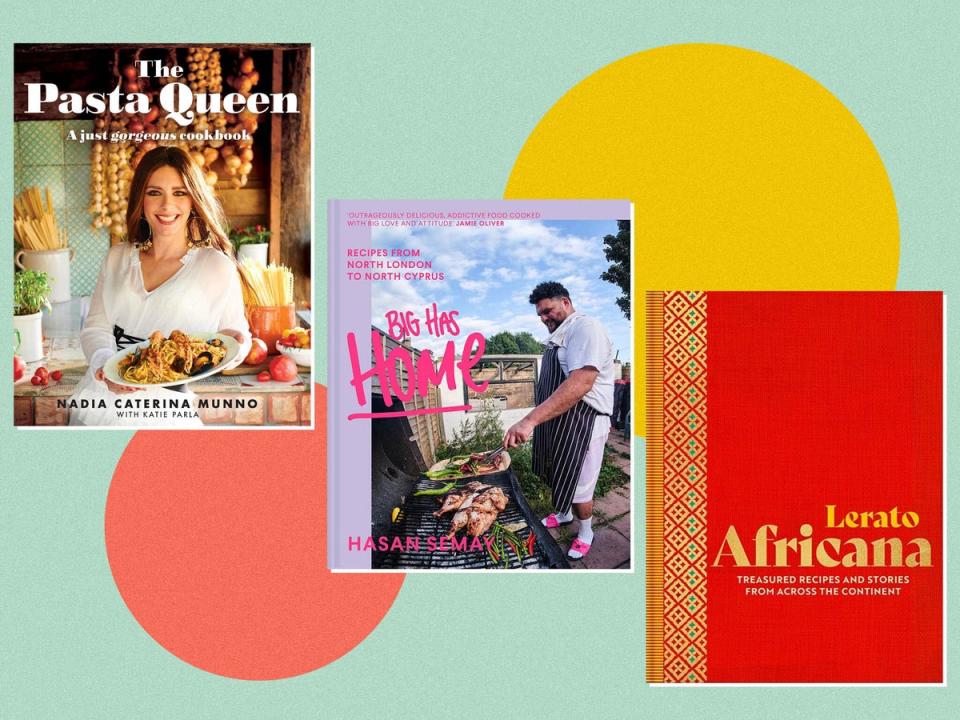
When it comes to cookbooks, we were spoiled for choice in 2022 – with a whole range of colourful, mouth-watering and thought-provoking new releases coming out.
Celebrity books still reigned supreme, with Paul Hollywood, Tom Kerridge and Mary Berry all putting out new offerings to vast success, but there was also space for new voices.
Melissa Thompson’s Motherland was a particular highlight – tracing the history of Jamaican food in a delicious fashion – and special shout-out has to go to the award-winning Nistisima by Georgina Hayden, which focused on fasting food eaten by those of Orthodox faith around the Mediterranean, Middle East and in Eastern Europe.
Some more unexpected names made a splash in the food world too – with reality star Megan McKenna, actor Joe Swash and musical husband-and-wife team Sophie Ellis-Bextor and Richard Jones giving us a peek inside their kitchens. With the cost-of-living crisis biting, there’s no doubt we’ll see more budget-friendly books as we move into 2023 – like Phil Vickery’s The Canny Cook, which centred on tasty meals you can whip up from tins.
With so many books up for grabs, it’s easy for some gems to get lost in the noise. These are three phenomenal cookbooks – and recipes – from 2022 you should definitely have on your radar.
‘Big Has HOME: Recipes From North London To North Cyprus’ by Hasan Semay
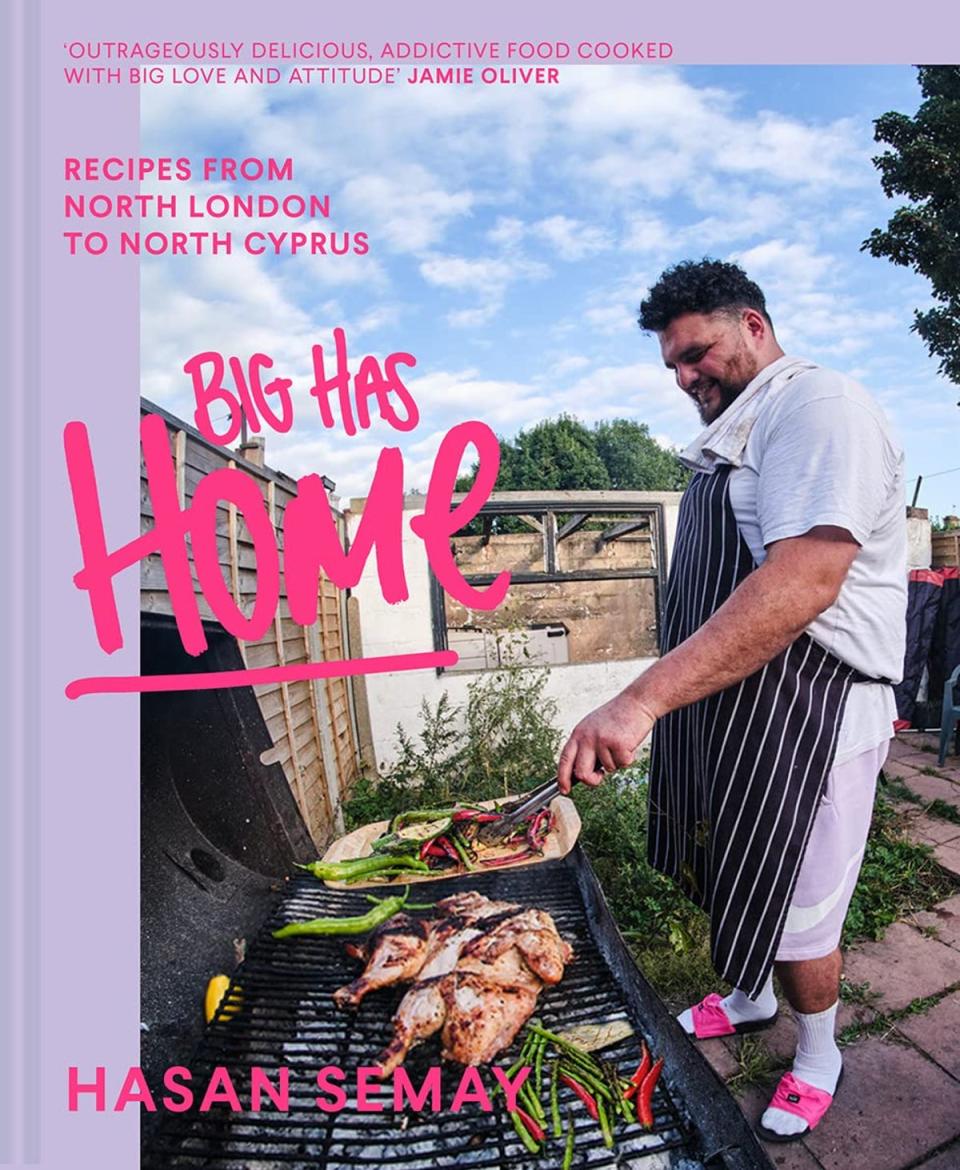
There was always going to be a lot of anticipation around North London-based chef Hasan Semay’s debut cookbook. Known as Big Has, he’s one of Jamie Oliver protégées, who trained in the Fifteen programme. It was there Has – who had previously bounced around odd jobs – settled on a career as a chef.
Like his mentor, Has is all about bringing delicious food to the masses. His Turkish Cypriot heritage is strongly felt in dishes like grilled octopus and lamb and potato kofte, and he also draws upon Mediterranean influences in crowd-pleasing recipes like cacio e pepe and fried courgette flowers. The dishes aren’t tricky but they’re full of life and soul – and with so many recipes calling for a BBQ, there are plenty to bookmark for next summer.
There’s something very relatable and authentic about Has’ debut – the pages are peppered with swearing, and you feel like he’s telling stories straight from his kitchen. And there’s a lot of range within the book, with his stories covering everything from driving to the fishmongers in Enfield, to how he learned how to light a BBQ, or how his father was drafted into the Cypriot civil war at 17.
Badadez kebab
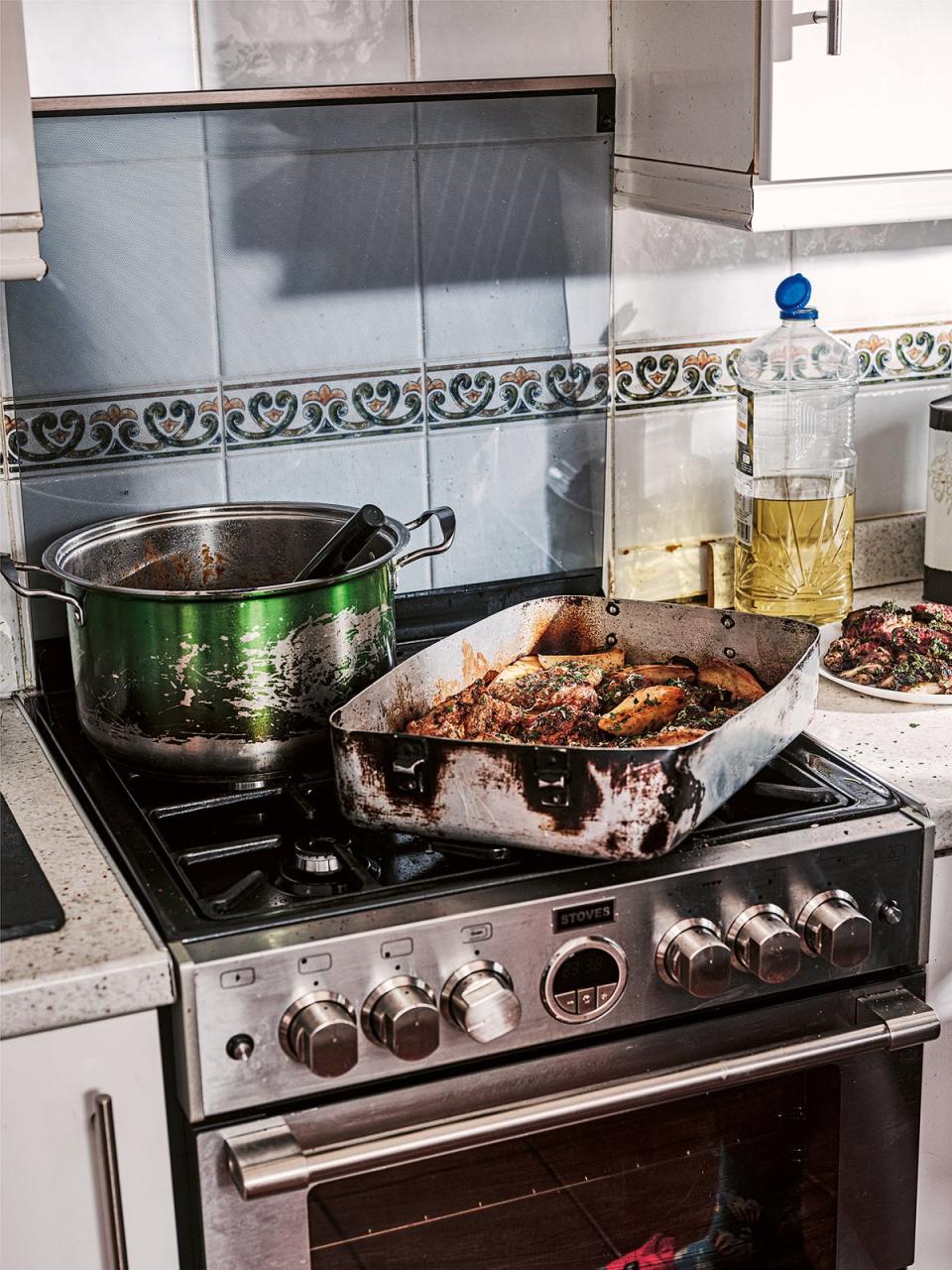
“This is the equivalent of a Cypriot Sunday roast. In Cyprus, most houses have an outdoor wood-fired oven and this dish cooks slowly for hours with burning olive-tree logs gently smouldering,” says Big Has.
“I don’t have one (I wish I did); if you do, defo do this in there; if not, you’ll have to stick to good old-fashioned indoor oven-cooking like me.
“Now, Cypriots don’t really care about cooking chickens beautifully. They’d just put this all in a tray and stick it in the oven for hours, but as no one wants to eat sawdust chicken, I’ve stripped the recipe back and tried to get it to a point where whoever gets the breast can actually enjoy it.”
Serves: 4
Ingredients:
1 chicken, weighing 1.8kg
A bunch of thyme
800g round shallots, peeled
1.5kg Cyprus potatoes, peeled and quartered lengthways
500g sweet pointed peppers
320g long green Turkish peppers
A good glug of vegetable oil
3-4tbsp tomato puree
Olive oil
Sea salt and black pepper
To serve:
Good-quality olive oil
Chopped flat-leaf parsley
Zest of 1 lemon
Rice
Turkish yogurt
Nice bread
Method:
1. Preheat the oven to 160C fan/180C/350F/gas mark 4.
2. Start by breaking down your chicken. Cut off the legs, then split the thighs and the legs. Take off the wings with a little breast. Cut out the backbone and cut the breasts into three equal pieces on the bone. Keep the breast on the bone – that’s our little safety blanket to stop our chicken drying out, plus the bone adds to the flavour.
3. Stick your chicken in a bowl, give it a good glug of olive oil, season with salt and pepper and a bunch of thyme. Don’t really worry about marinating, just dress it.
4. Heat a heavy-based frying pan over a medium heat with a good glug of olive oil and seal your chicken. Make sure you brown your chicken on all sides to build flavour but don’t burn the thyme. Once the chicken is sealed, stick it on a plate and set aside.
5. Now, it’s pretty much just stick everything in a roasting tray. Add the shallots and potatoes first, then slice the pointed sweet peppers into three, remove the seeds and add to the mix. The green Turkish peppers can just go in whole. Add the vegetable oil and season everything heavily with salt and pepper.
6. Stir the tomato puree into 850ml boiling water, then add to the mix. Add the chicken we sealed off earlier, leaving the breast behind for later. Place the tray in the oven and cook for two hours. We want the potatoes to suck up all the flavour.
7. After two hours, add the breast meat over the top. Don’t mix it through as you want to avoid breaking up the potatoes. Turn the oven up to 210C fan/230C/450F/gas mark 8 and cook for 15 minutes. The chicken breast will cook through, and your potatoes will crisp around the edges.
8. Pull it out of the oven and let everything rest for 10 minutes because otherwise it will 100% burn your entire mouth. I like to finish mine with a good glug of olive oil, chopped parsley and lemon zest. Serve with rice, yogurt and bread. Happy Sunday.
Pavilion Books, £20. Photography by Haarala Hamilton.
‘Africana: Treasured Recipes And Stories From Across The Continent’ by Lerato Umah-Shaylor
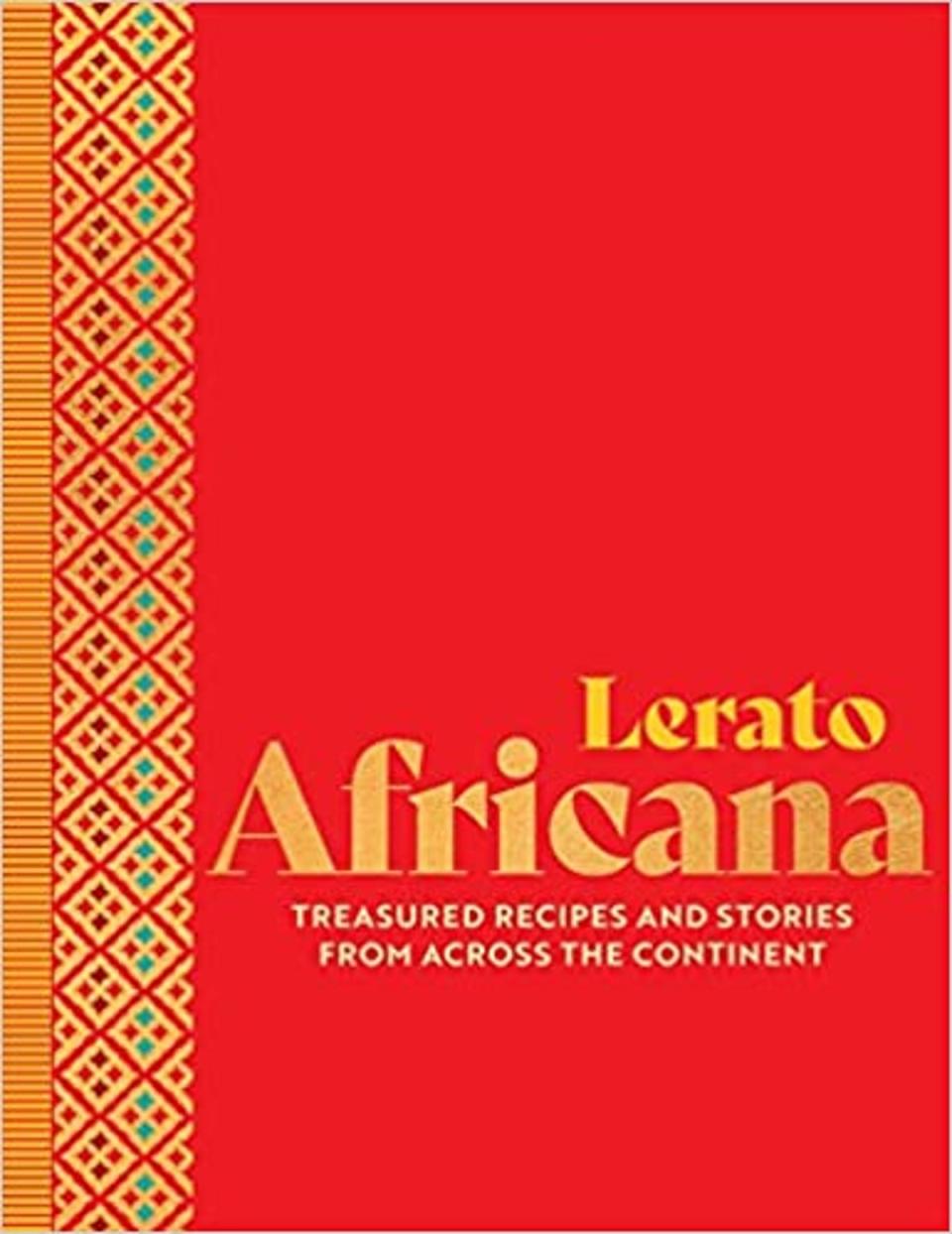
Cookery writer and presenter Lerato Umah-Shaylor might have graduated with a degree in economics from university, but it wasn’t long before she dove headfirst into the world of food. Africana is her debut cookbook, and it’s a colourful culinary adventure across the continent of Africa.
Heralding from Nigeria, Umah-Shaylor’s family recipes run throughout the book – from a snack inspired by her aunt Justine’s twice-fried yam chips to melon seed soup from her mother. Plus, there are dishes from other nations – including Moroccan smoky aubergines and Ugandan Rolex (a delightfully spiced omelette rolled up in chapati).
While she does introduce a few African staple ingredients that are unlikely to be found in many British cupboards (such as baobab), themes of sustainability and seasonality run throughout the book. Plus, if you do find yourself buying a new ingredient, you’ll likely be using it in Umah-Shaylor’s recipes time and time again.
Plantain shakshuka
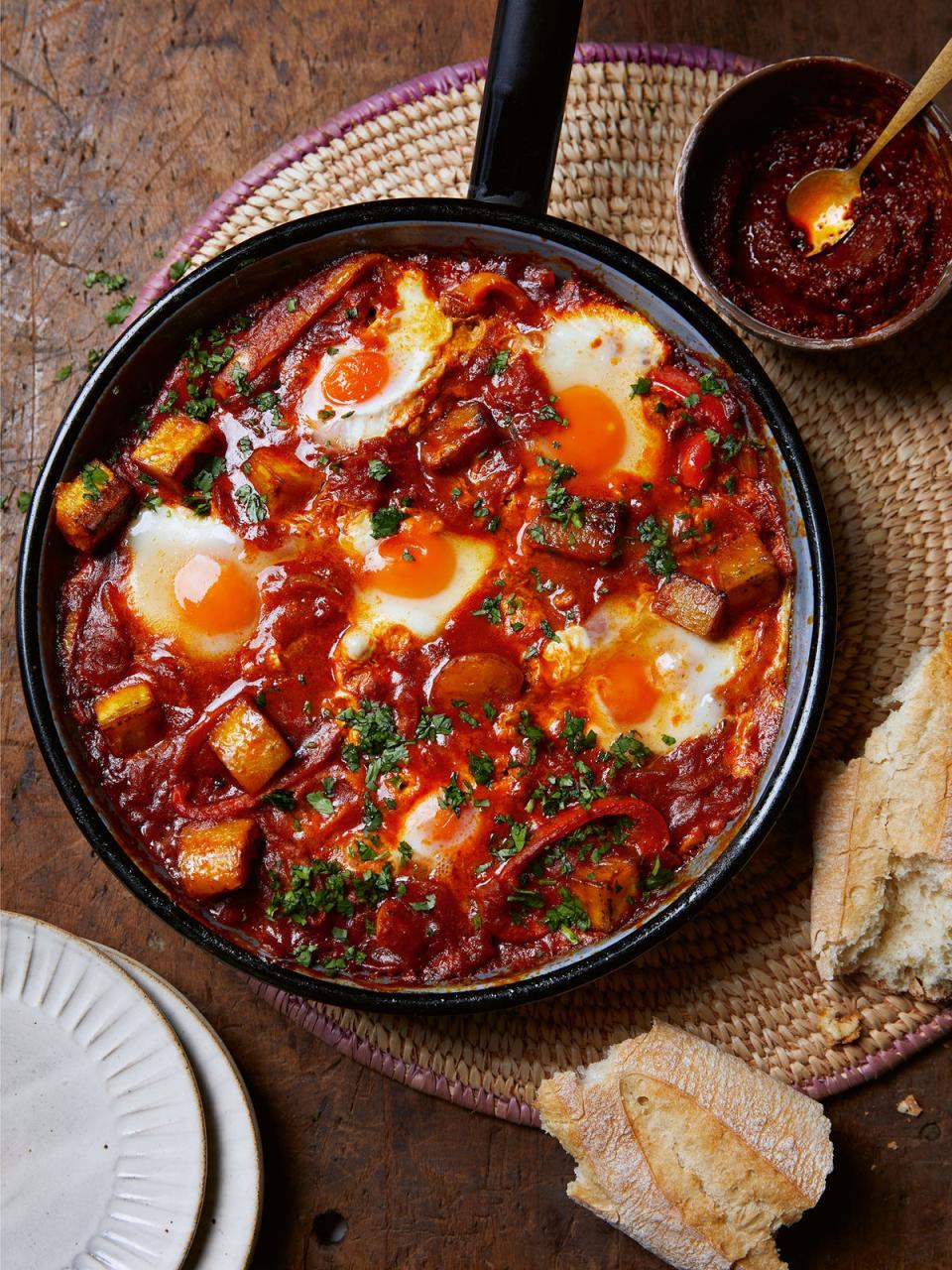
“Shakshuka is Tunisia’s gift to the world. A one-pot dish of eggs on top of a lava of tomatoes and peppers, this moreish legacy travelled across North Africa, to Israel and the Middle East,” says Umah-Shaylor.
“My plantain shakshuka was created by chance when I threw in some leftover plantains. Unsurprisingly, the result was a stunning marriage of North and West African flavours. This is sure to become one of your brunch-time favourites.”
Serves: 4-6
Ingredients:
Vegetable oil, for frying
For the plantain:
1 large plantain, peeled and cut into 2cm chunks
¼ tsp paprika
For the shakshuka:
4 tbsp olive oil
1 white onion, peeled and roughly chopped
2 bell peppers (red and yellow), stemmed, deseeded and cut into 1cm slices
¾ tsp fine sea salt
4 garlic cloves, peeled and crushed
2 tbsp red harissa
1 tbsp tomato puree
3 tsp cumin seeds, toasted and crushed, or 1½tsp ground cumin
2 tsp paprika
½ tsp ground turmeric
½ tsp chilli flakes (optional)
800g vine-ripened tomatoes, or 2 x 400g cans plum tomatoes
8 medium free-range eggs, 2 beaten
To serve:
1 small bunch of fresh coriander, torn
Method:
1. Heat two centimetres of oil in a shallow frying pan to 190C. Use a slotted spoon to lower the plantain chunks into the hot oil. Cook in batches for a few minutes, turning frequently to ensure browning on all sides. Remove and drain on kitchen paper. Sprinkle with a pinch of fine sea salt and the paprika while the plantain is still hot, and toss to coat well.
2. To prepare the shakshuka, pour the olive oil into a 26-centimetre saute pan, for which you have a lid, and set over a medium heat. Add the onion and peppers, season with the salt and cook for five minutes until softened.
3. Add the garlic, red harissa and tomato puree and cook for three minutes, stirring frequently, then stir in the dry spices, and the chilli flakes if your harissa isn’t hot enough. Tip in the tomatoes, cover and simmer for 15-20 minutes, until thickened and sweetened, stirring occasionally and breaking down the tomatoes with a wooden spoon.
4. Scoop half of the sauce into a bowl then spread the remaining sauce out evenly in the pan. Scatter half of the plantain chunks over the top, then pour the two beaten eggs over the top to cover the plantain and sauce. Cover and cook for two minutes.
5. Pour the reserved sauce over the layer of eggs and gently spread out evenly. Scatter over the remaining plantain. Crack the remaining eggs, one at a time, into a bowl. Use the back of the spoon to make six ‘wells’ in the sauce. Pour an egg in each one, cover the pan and cook for a final 10 minutes over a medium-low heat, or until the eggs are cooked as you like them. If you have an ovenproof pan, you can also finish the shakshuka in an oven preheated to 200C/180C fan/gas mark 6 for five minutes.
6. Scatter over the chopped coriander and serve with red harissa and toasted slices of baguette or Medina bread.
HQ, £22. Photography by Tara Fisher.
‘The Pasta Queen: A Just Gorgeous Authentic Italian Cookbook’ by Nadia Caterina Munno, with Katie Parla
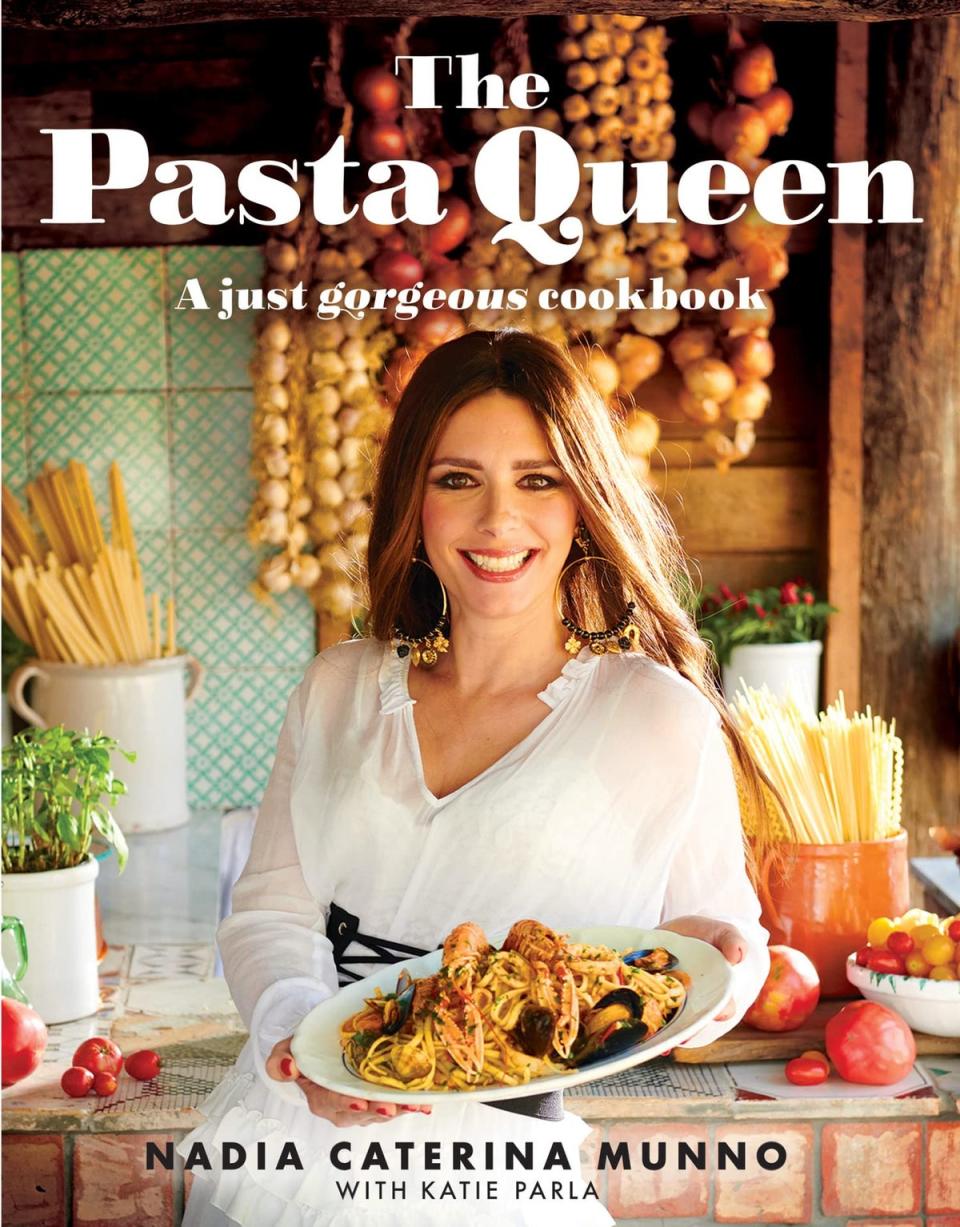
With 2.6 million followers on TikTok and 1.8 million on Instagram, it was only a matter of time before social media sensation Nadia Caterina Munno – AKA The Pasta Queen – released her own cookbook.
Born in Rome, Munno is all about the traditional way of pasta-making, passed down to her from generations – in fact, her great-great-grandparents started a pasta factory in the 1800s in southern Italy. The book covers everything from how to make and roll out the perfect dough, which pasta shapes to use, and the best sauces to go with it.
The recipes are all about simple but bold flavours – and you might recognise a few that have gone viral on social media, including the spaghetti al limone, the classic carbonara or the assassin’s spaghetti (a spicy dish that has a colourful tale to go with it).
Munno’s charisma and dramatic storytelling helped her become a huge hit on social media, and her personality oozes from every page (you’ll even learn her ladle is called “Bruno” and her large serving fork “Antonietta”, because why on earth not?).
Tonnarelli cacio e pepe
“Cacio e pepe is the dish that’s followed me throughout my entire life,” says Munno.
“From the dinner table as a small child to the hectic trattoria down the street to standing around the stove with friends after a night at the discoteca, cacio e pepe has been a constant presence. It’s earthy, silky, simple and satisfying – and, perhaps best of all, it comes together fast.”
Sevres: 4
Ingredients:
300g finely ground Pecorino Romano
1 tbsp coarsely ground black pepper, plus more for garnish
Sea salt
450g homemade Tonnarelli or store-bought fresh spaghetti alla chitarra
Method:
1. Fill a large pot halfway with water. Bring the water to a rolling boil over high heat.
2. While the water is coming to a boil, in a medium bowl, combine the Pecorino Romano and 240ml water and stir passionately, adding more water a little at a time as needed to make a luscious cream.
3. In a large frying pan, heat the ground pepper over low heat, swirling to lightly toast it and bring out its gorgeous aromas, about 30 seconds. Add a splash of water and swirl to infuse it with the pepper’s spicy and smoky aromatics. Remove the pan from the heat.
4. Once the water has reached a rolling boil, season lightly with salt. Drop in the tonnarelli and cook until the pasta is tender, two to two-and-a-half minutes.
5. Transfer the pasta directly to the pan with the pepper. Pour in the Pecorino Romano sauce and toss vigorously until the pasta is drenched in peppery sauce and the sauce is silky and smooth. Add the tears of the gods [the pasta water] a spoonful at a time if the sauce is clumpy and stir passionately until smooth.
6. Serve drizzled with any remaining sauce in the pan and garnish with a scrunch of pepper.
HarperCollins, £22. Photography by Giovanna Di Lisciandro.

 Yahoo Finance
Yahoo Finance 